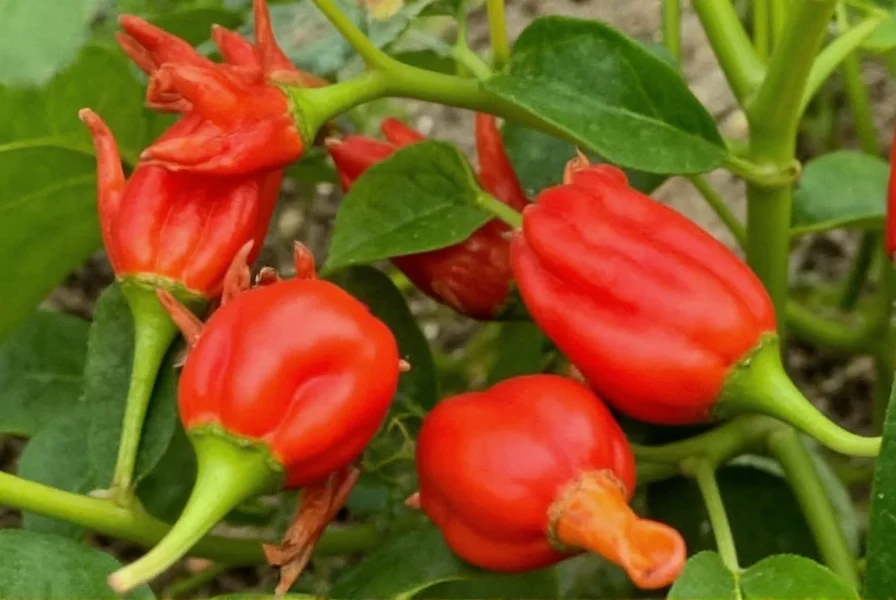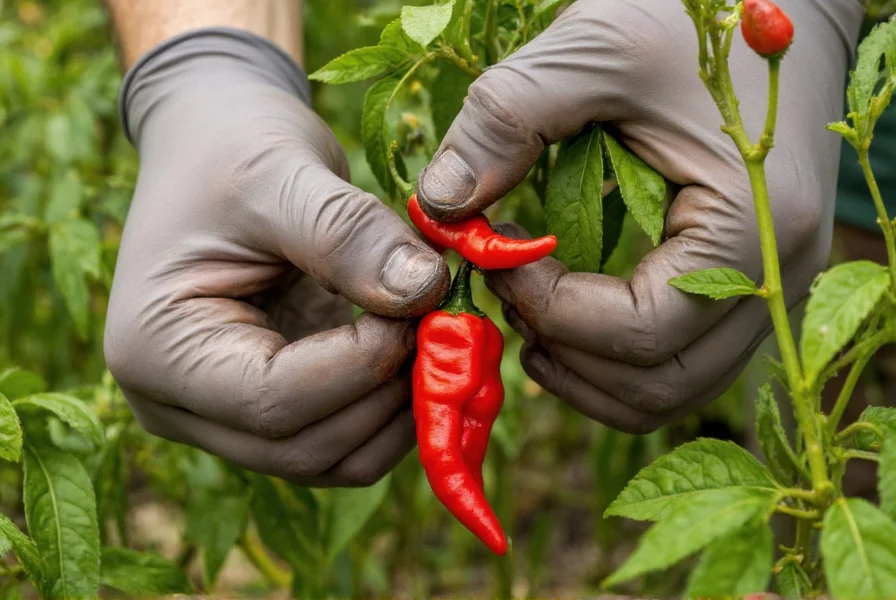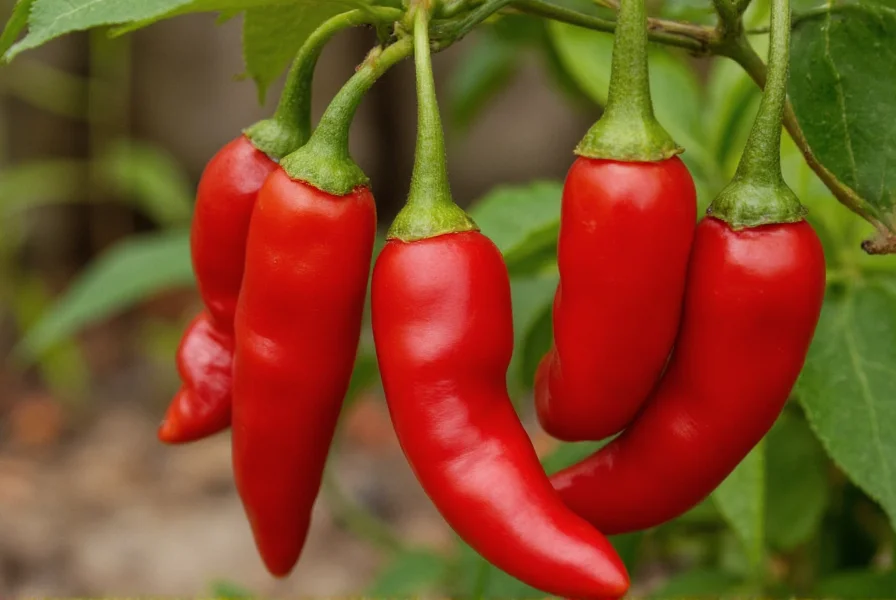The scorpion chili pepper represents one of nature's most intense culinary experiences. Understanding how hot is scorpion chili pepper requires context: it measures between 1.2 and 2 million Scoville Heat Units (SHU), making it approximately 400 times hotter than a typical jalapeño. This places it firmly among the elite category of superhot peppers that demand respect and careful handling.
Understanding Scorpion Chili Varieties
While "scorpion chili" commonly refers to the Trinidad Scorpion, several distinct varieties exist, each with unique characteristics. The Moruga Scorpion, for instance, earned recognition as one of the world's hottest peppers in 2012, with individual fruits testing above 2 million SHU. Other notable varieties include the7 Pot Scorpion and the Baby Ghost Scorpion, which offer slightly different heat profiles and flavor notes.

Heat Measurement and Comparison
When examining the scoville scale scorpion chili rating, it's essential to understand how it compares to other popular hot peppers. The table below illustrates where scorpion peppers sit relative to more common varieties:
| Pepper Variety | Scoville Heat Units (SHU) | Heat Relative to Jalapeño |
|---|---|---|
| Trinidad Moruga Scorpion | 1,200,000-2,000,000 | 200-400x hotter |
| Carolina Reaper | 1,400,000-2,200,000 | 230-440x hotter |
| Habanero | 100,000-350,000 | 12-35x hotter |
| Jalapeño | 2,500-8,000 | Baseline |
Understanding the trinidad scorpion vs carolina reaper comparison reveals subtle differences. While the Carolina Reaper currently holds the official Guinness World Record, the Moruga Scorpion has demonstrated higher peak heat levels in some tests. The Reaper typically offers a sweeter initial flavor before the intense heat builds, whereas scorpion peppers often deliver immediate, intense heat with underlying tropical fruit notes.
Growing Scorpion Chili Peppers
Successful cultivation of scorpion peppers requires specific scorpion pepper growing conditions. These plants thrive in tropical climates with consistent temperatures between 70-90°F (21-32°C) and high humidity. Gardeners in temperate regions can grow them indoors or in greenhouses with proper care.
Key growing considerations include:
- Starting seeds 8-10 weeks before the last frost date
- Using well-draining soil with pH between 6.0-7.0
- Providing 6-8 hours of direct sunlight daily
- Maintaining consistent moisture without waterlogging
- Expecting 90-120 days to maturity from seed

Culinary Applications and Safety
When cooking with scorpion chili peppers, extreme caution is necessary due to their intense capsaicin concentration. Professional chefs recommend:
- Always wearing nitrile gloves when handling
- Working in well-ventilated areas to avoid inhaling capsaicin particles
- Using dedicated cutting boards and utensils
- Starting with minuscule amounts (1/16 teaspoon or less)
- Never tasting raw superhot peppers directly
The unique flavor profile of scorpion peppers—fruity, citrusy, and floral notes beneath the intense heat—makes them valuable in specific applications. They work exceptionally well in hot sauces, infused oils, and small additions to stews or braises where their complex flavors can shine without overwhelming the dish.
Safety Considerations for Superhot Peppers
Proper understanding of handling super hot peppers safely prevents painful accidents. Capsaicin, the compound responsible for heat, can cause severe irritation to skin and eyes. If exposure occurs:
- Rinse affected areas with cold water (not warm, which opens pores)
- Apply milk, yogurt, or oil to help dissolve capsaicin
- Avoid touching face or sensitive areas after handling
- Consider wearing safety goggles for extreme varieties
Individuals with certain health conditions, including gastrointestinal issues or heart conditions, should consult with healthcare providers before consuming superhot peppers. The intense heat can trigger adverse reactions in susceptible individuals.
Common Misconceptions
Several myths surround scorpion chili peppers. Many believe that drinking water alleviates the burn, but water actually spreads capsaicin. Dairy products containing casein (like milk or yogurt) are far more effective at neutralizing the sensation. Another misconception is that all superhot peppers taste identical—they actually have distinct flavor profiles that experienced chili enthusiasts can differentiate.
Responsible Consumption
Respect for the is scorpion pepper dangerous question leads to safer enjoyment. Start with commercially prepared products that precisely control heat levels rather than attempting to use raw peppers. Many hot sauce manufacturers blend scorpion peppers with other ingredients to create balanced, flavorful products that showcase the pepper's complexity without overwhelming heat.
Frequently Asked Questions
How hot is a scorpion chili pepper compared to other superhots?
Scorpion chili peppers typically range from 1.2 to 2 million Scoville Heat Units (SHU), placing them among the world's hottest peppers. They're comparable to Carolina Reapers but generally slightly less hot on average, though some scorpion varieties like the Moruga Scorpion have tested higher than certain Reaper specimens. They're approximately 400 times hotter than a jalapeño.
What's the difference between Trinidad Scorpion and other scorpion varieties?
The Trinidad Scorpion (Bhut Jolokia) originates from Trinidad and Tobago and features a distinctive stinger-like tail. Other varieties include the Moruga Scorpion (from Trinidad's Moruga region, often hotter), 7 Pot Scorpion (with a slightly different flavor profile), and Baby Ghost Scorpion (a hybrid). While all are extremely hot, they differ in shape, color progression, and subtle flavor notes.
Can you grow scorpion peppers in a home garden?
Yes, you can grow scorpion peppers in a home garden if you provide proper scorpion pepper growing conditions. They require 90-120 days of warm temperatures (70-90°F), high humidity, well-draining soil, and 6-8 hours of direct sunlight. In cooler climates, grow them in containers that can be moved indoors. Start seeds indoors 8-10 weeks before the last frost and use gloves when handling mature plants and peppers.
What should I do if scorpion pepper burns my skin?
If scorpion pepper burns your skin, immediately rinse with cold water (not warm) for several minutes. Apply milk, yogurt, or vegetable oil to help dissolve the capsaicin. Avoid touching your face or sensitive areas. For severe reactions, seek medical attention. Prevention is best—always wear nitrile gloves when handling super hot peppers safely and consider eye protection for the hottest varieties.
How can I use scorpion peppers in cooking without overwhelming heat?
To use scorpion peppers without overwhelming heat, start with minuscule amounts—1/16 teaspoon of finely minced pepper or less. Remove all seeds and membranes, which contain the highest capsaicin concentration. Consider infusing the pepper flavor into oils or vinegars rather than adding raw pepper. Many chefs recommend using commercially prepared scorpion pepper products that have controlled heat levels. Always balance with dairy, acid, or sweetness to counter the intense heat.











 浙公网安备
33010002000092号
浙公网安备
33010002000092号 浙B2-20120091-4
浙B2-20120091-4